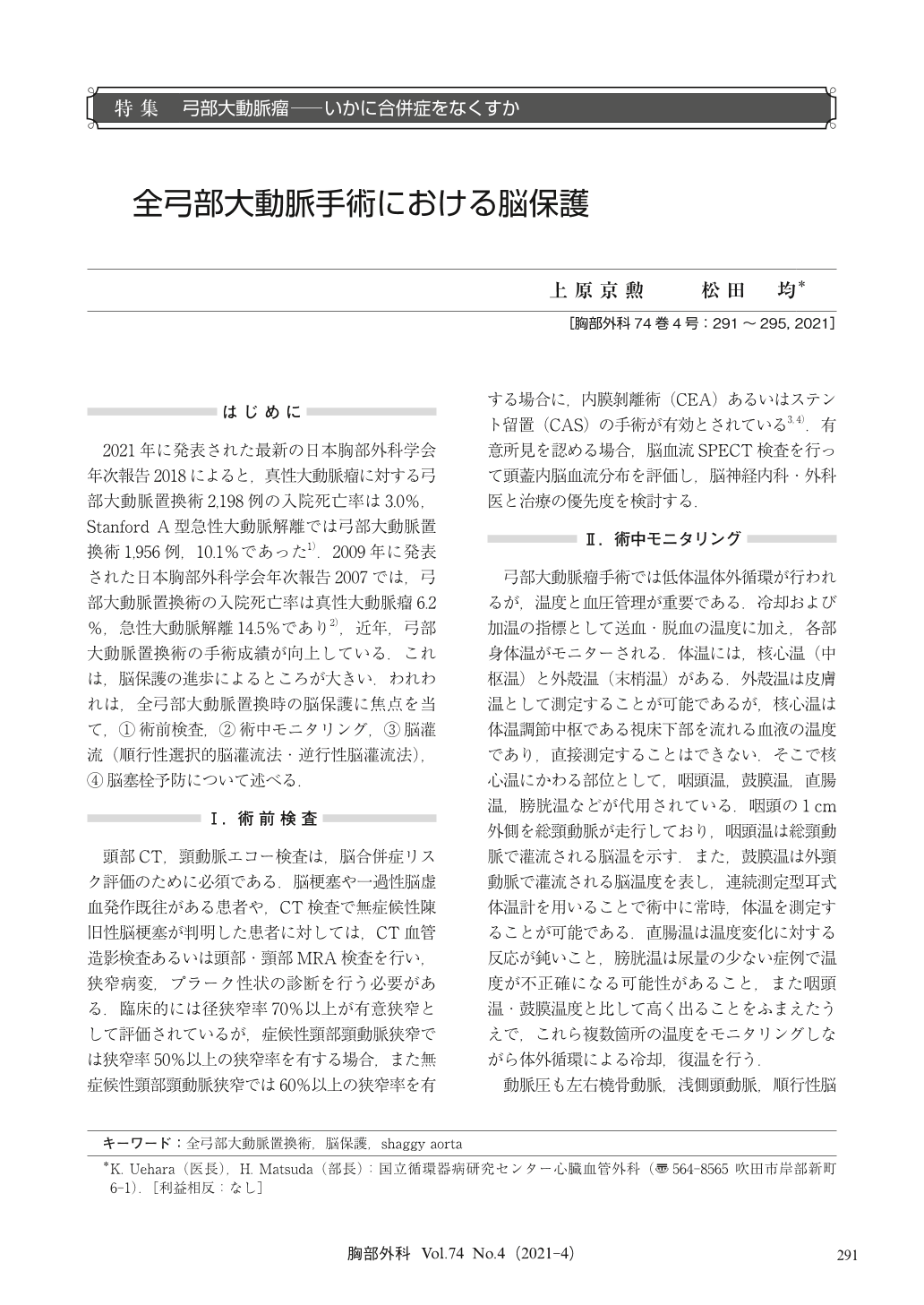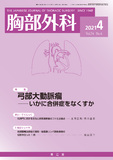Japanese
English
- 有料閲覧
- Abstract 文献概要
- 1ページ目 Look Inside
- 参考文献 Reference
2021年に発表された最新の日本胸部外科学会年次報告2018によると,真性大動脈瘤に対する弓部大動脈置換術2,198例の入院死亡率は3.0%,Stanford A型急性大動脈解離では弓部大動脈置換術1,956例,10.1%であった1).2009年に発表された日本胸部外科学会年次報告2007では,弓部大動脈置換術の入院死亡率は真性大動脈瘤6.2%,急性大動脈解離14.5%であり2),近年,弓部大動脈置換術の手術成績が向上している.これは,脳保護の進歩によるところが大きい.われわれは,全弓部大動脈置換時の脳保護に焦点を当て,①術前検査,②術中モニタリング,③脳灌流(順行性選択的脳灌流法・逆行性脳灌流法),④脳塞栓予防について述べる.
The surgical outcomes of total arch replacement in patients both with atherosclerotic aneurysm and Stanford type A acute aortic dissection have been improved. The development of brain protection contributed to excellent results in aortic arch surgery. Total arch replacement with four branched vascular graft using antegrade selective cerebral perfusion under mild hypothermia has been standardized in Japan, resulting in lower operative mortality and perioperative cerebral complications. However, severely atherosclerotic aorta with diffuse ulcers, “shaggy aorta”, still has a potential high-risk for neurological deficits.
Herein, the strategies to prevent neurological complications in total arch replacement, including preoperative images, cannulation/cerebral perfusion, temperature, monitoring systems are discussed. Finally, surgical approaches to shaggy aorta are reviewed. The combination of each step can lead to satisfactory surgical outcomes.

© Nankodo Co., Ltd., 2021


